-
About
- About Listly
- Community & Support
- Howto
- Chrome Extension
- Bookmarklet
- WordPress Plugin
- Listly Premium
- Privacy
- Terms
- DMCA Copyright
- © 2010-2025 Boomy Labs


 Jan van van Bon
Jan van van Bon
Listly by Jan van van Bon
ITIL is still a hype, but several alternatives are now offering practice-based guidance that compete with ITIL. here is a list of alternatives, but don't forget: they are merely best practice frameworks and you will always need a management system to make them successful.
The standard for that management system is USM, specified in the Unified Service Management method. Check the USM Portal for more information.
=== This list is created in the context of knowledge sharing. For that reason we support the SURVUZ Foundation. But in the end, nothing beats face-to-face meetings, so we sponsor ConnectingFriends ===
Source: http://www.itsmportal.com/frameworks

Do not underestimate the power of Common Sense!
Especially when you are running a company of 1 person :) or maybe few more... Even in a large organisations Common Sense is a powerful tool.
Absolutely for free! No license, no fees, no certifications!
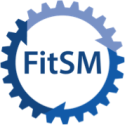
FitSM - A practice-based framework for lightweight service management in federated IT infrastructures. FitSM tries to offer a simpler and more realizable approach towards ITSM, especially for small to medium sized IT organizations. All parts FitSM are published under Creative Commons licenses.
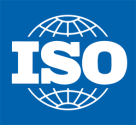
ISO/IEC 20000-1 is a service management system (SMS) standard. It specifies requirements for the
service provider to plan, establish, implement, operate, monitor, review, maintain and improve an SMS. The
requirements include the design, transition, delivery and improvement of services to fulfil service requirements.

COBIT 5 is the only business framework for the governance and management of enterprise IT. It provides globally accepted principles, practices, analytical tools and models to help increase the trust in, and value from, information systems.
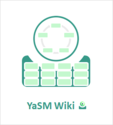
YaSM service management - a simple, practice-based framework for managing services, based on established best practices.
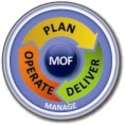
Microsoft Operations Framework (MOF) 4.0 is a practice-based framework that provides relevant, practical, and actionable guidance for today's IT pros. The free, downloadable framework encompasses the entire IT service management lifecycle, providing organizations with the knowledge to seamlessly blend business and IT goals while establishing and implementing reliable, cost-effective IT services.

TOGAF is an Enterprise Architecture methodology and framework used by the world’s leading organizations to improve business efficiency.
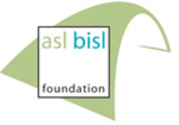
A framework of best practices for the Information Management domain.
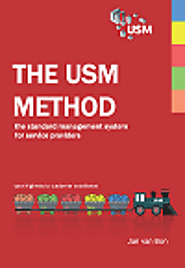
The principle-based USM method provides a standardized management system for a service organization to manage its people, its processes, its technology, and its services, based on an explicit service management architecture. USM is the fundament for all practice-based frameworks like ITIL, IT4IT, COBIT, etc. It provides the Service Management Architecture that specifies a standardized Service Management System for any service organization, in any industry,m of any size, Download the free ebook or join a free online workshop to learn about the most sustainable solution to a service management goal.

The ISO 9000 family of standards is related to quality management systems and designed to help organizations ensure that they meet the needs of customers and other stakeholders while meeting statutory and regulatory requirements related to the product. The standards are published by ISO, the International Organization for Standardization, and available through National standards bodies.
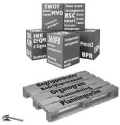
RPM is a management method for medium-sized and large organizations (from approx. 75 employees upwards). The method itself is rooted in organizational development, quality management and complexity theory.
CMMI-SVC guides all types of service providers to
establish, manage, and improve services to meet business
goals.

ASL®'s goal is the professional development of application management. This is achieved by offering a framework within which the processes of application management are brought in relation to each other.

The Integration Framework is a set of standards that supports the interoperability between applications defined in the Application Framework via TM Forum interfaces. The interfaces are defined in terms of the Information Framework's entities/attributes, and the requirements for the interfaces from a business process perspective come from the Business Process Framework.

The APICS Operations Management Body of Knowledge (OMBOK) Framework provides an outline of the areas of knowledge required to manage the processes for producing and delivering common products and services. The descriptions give an overview of each area and, when taken together, define a generally accepted view of the scope of operations management as a field of study. As operations management is
a dynamic field, the framework will evolve over time to reflect changing perceptions and incorporate new approaches as their usage becomes prevalent.

The Zachman Framework is a schema for organizing architectural artefacts (in other words, design documents, specifications, and models) that takes into account both whom the artefact targets (for example, business owner and builder) and what particular issue (for example, data and functionality) is being addressed.
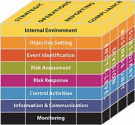
COSO's ERM Risk Assessment in Practice This thought paper provides leadership thinking on risk assessment approaches and techniques that have emerged as the most useful and sustainable for decision-making.
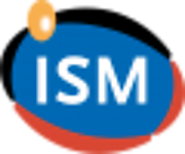
ISM (Integrated Service Management) biedt modern ICT-servicemanagement door processen en vooral people en product in samenhang, standaard en eenvoudig in te richten én aan te sturen. Door één geïntegreerde aanpak voor het managen van calls, escalaties, projecten en securitylevels. ISM is ontwikkeld voor ICT-organisaties.

The IT4IT Forum provides a vendor-neutral place to meet, gain knowledge and lead the development of the IT4IT Reference Architecture for IT management portfolio.

VeriSM™ is a service management approach for the digital age that helps service providers to create a flexible operating model to meet desired business outcomes.

Enterprise Service Management Architect.
Thought leader, author of many books and articles, practitioner, trainer, consultant. Not walking the usual path of best practice frameworks, but working on the principles side of the organization - for better and lasting results.